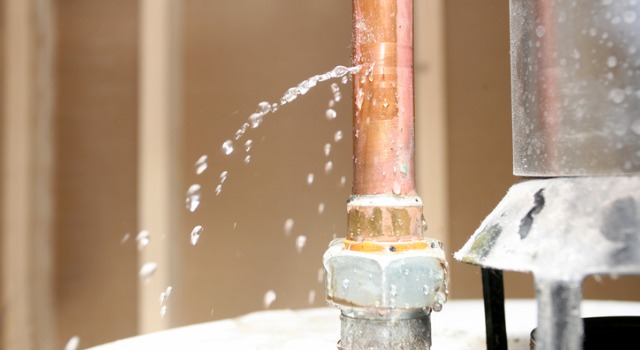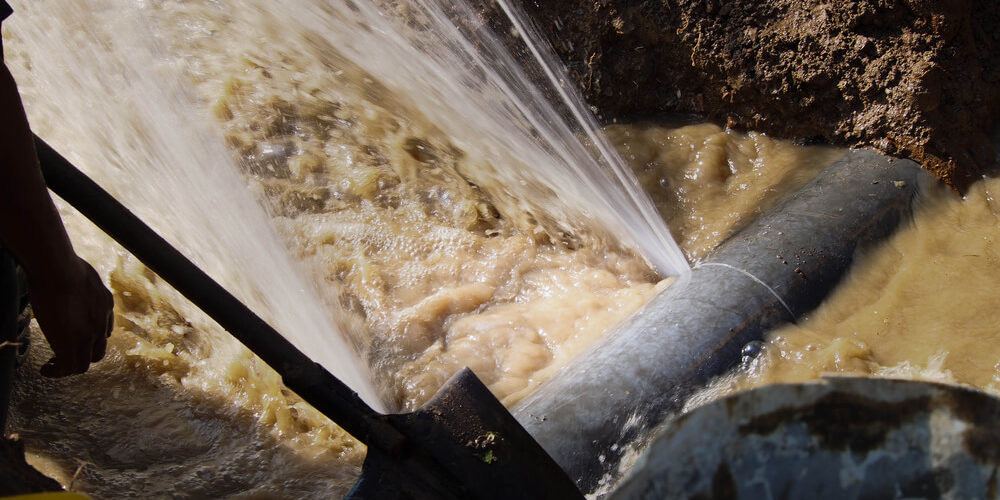Stop the Flood: Methods for Spotting and also Taking Care Of Burst Pipes
Stop the Flood: Methods for Spotting and also Taking Care Of Burst Pipes
Blog Article
Everybody may have their own individual notions when it comes to How to install a dishwasher safely.

A ruptured pipe is a significant emergency; you can just stand as you view water you pay dearly to rejoin with the earth. In worse cases, you notice a swimming pool on your kitchen area floor, which is a terrific trip risk, specifically if you have children around. If the pipeline that burst remained in your walls, bad news: you may require to paint that entire area.
How can a disaster like a ruptured pipeline be avoided as well as taken care of? Well, by listening to your expert emergency plumbers as well as adhering to these rules.
How do I understand when my pipelines have burst?
Changing water stress
Pipelines do not just burst in a day. You may have seen that your kitchen tap or shower does not run immediately when you turn the tap. It might stop for a couple of seconds and after that blast you with even more pressure than usual.
In other instances, the water might appear regular at first, then decrease in stress after a few seconds.
Polluted water
Lots of people presume a ruptured pipeline is a one-way outlet. Quite the contrary. As water flows out of the hole or laceration in your plumbing system, impurities locate their method.
Your water may be contaminated from the source, so if you can, inspect if your water storage tank has any kind of troubles. However, if your drinking water is supplied and purified by the city government, you ought to call your plumber right away if you see or scent anything funny in your water.
Puddles under pipes and sinks
When a pipe bursts, the outflow develops a puddle. It may appear that the puddle is expanding in dimension, as well as despite the amount of times you mop the puddle, in a few mins, there's an additional one waiting to be cleaned up. Commonly, you may not be able to map the pool to any type of visible pipelines. This is a sign to call an expert plumber.
Damp wall surfaces as well as water spots
Before a pipe ruptureds, it will leakage, a lot of times. If this consistent leaking goes undetected, the leakage might graduate into a vast tear in your pipeline. One simple means to prevent this emergency is to watch out for wet wall surfaces advertisement water stains. These water discolorations will lead you right to the leak.
Untraceable trickling noises
Pipeline ruptureds can occur in the most undesirable places, like within concrete, inside wall surfaces, or under sinks. When your home goes silent, you might be able to listen to an aggravatingly consistent trickling noise. Also after you have actually checked your shower head and also kitchen area tap, the trickling may proceed.
Dear visitor, the trickling may be coming from a pipeline inside your walls. There isn't much you can do concerning that, except inform a professional plumber.
Show up the Warm
Set up followers to blow heat right into cold spaces. Keep the garage door shut. If you have minimized water flow, warm the most at risk pipes (normally in basements as well as crawl spaces or near exterior wall surfaces) with a hair dryer. Leave the faucet on while you apply warmth. As you melt ice, the circulation will boost. To avoid pipelines from freezing, shield your walls.
Beginning Eliminating the Water
Get hold of the mop, containers and a shop vacuum cleaner to begin to eliminate the water due to the fact that you certainly do not want it saturating into everything else in your home. And also, a quick tidy up will certainly decrease the opportunities of something getting moldy.
What do I do when I detect a ruptured pipe?
Your water meter will certainly remain to run even while your water wastes. To lessen your losses, find the primary controls and also turn the supply off. The water pipe are an above-ground framework at the edge of your building.
How to Fix & Detect a Leaking Pipe
How Do I Know if a Pipe is Leaking?
Leak detection tests can help you determine if your pipe has a leak. Even if you don’t see an apparent leak, you should still conduct leak detection tests regularly to save water and money—and prevent major damage to your home.
Water meter. It can be helpful to figure out what your usual water meter usage numbers are and then monitor them regularly. To monitor your meter, first, turn off all water faucets in your home. Check the meter and write down the numbers. In a few hours, check the meter again. If the numbers have changed, you have a leak. Water gauge. Use a water gauge to test your water pressure. Your showerhead should produce a certain amount of water pressure based on its model and design. If the pressure is lower than it is supposed to be for that specific showerhead, your home likely has a leak. Puddles. Look inside your bathroom, laundry, and kitchen sink cabinets. Puddles around the cabinets or around toilets, tubs, showers, and washing machines indicate the presence of a leaking pipe. You may also notice loose tiles, peeling or flaking paint, or mold caused by water accumulation. Napkin test. Even if you don’t see any puddles, you may still have a leak. You can test for water leaks in the bathroom, laundry, and kitchen by wiping below-sink connections with a napkin, paper towel, or piece of toilet paper. If it becomes damp, you probably have a leaking pipe under the sink. Discolored walls. Walls that are discolored—usually with brown or yellow stains—or bulging might mean that they have been impacted by water damage caused by a leaking pipe. Smell. A leaky pipe will create sitting water, and over time, that water may develop a musty smell. If your home smells musty, but you can’t locate the source, it may be due to a leak. Steps for Fixing a Leaking Pipe
A leaky drain can be remedied by tightening the pipe base, replacing the drain seal, caulking the rim, and tightening the pipe nut. Similarly, a leaking toilet pipe can be treated by tightening the packing nut. You may also need to replace the valve. A leaky faucet may just need tightening or replacement of the washers. If that doesn’t work, consider replacing your faucet. If your pipe has a hole in it, you may want to use a pipe leak sealer or pipe leak tape. This quick fix for water pipe leaks can also temporarily fix a copper pipe leak. https://www.ahs.com/home-matters/quick-tips/how-to-tell-if-pipes-are-leaking/

We hope you liked our part on How to Prepare for Your Dishwasher Installation. Many thanks for finding the time to read our article. Are you aware of somebody who is fascinated with the niche? Do not hesitate to promote it. I recognize the value of reading our article about How to Install and Connect a New Dishwasher.
Visit Site
Report this page